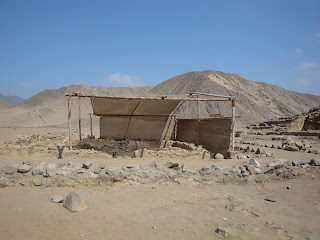Maria de Guzman founded Santa Catalina in 1580 as a means for women from wealthy, high-class Spanish families to enter religious service. Every nun brought a significant dowry, 25 listed items (some even brought fine English china) and between 1 - 4 servants / slaves. Although they could not leave the convent, they lived a lavish lifestyle with concerts and parties and surrounded by fine art.
Life was good until Pope Pius IX sent Sister Josefa Cadena to "reform" the monastery in 1825. Things went downhill fast from there. After a few earthquakes in the 1960s, the convent was restored and opened to the public for tourism with proceeds helping to support the small religious population still living within these walls.




We were extremely fortunate to view "Juanita" in the Santuarios Andinos Museum as she often travels to other museums. Juanita is still frozen and in a special glass box for viewing. (These pictures are from the museum website.)
Johan Reinhard and Miguel Zarate discovered Juanita high on Mount Ampato. Finding her body was amazing enough and there was even more drama during the second climb to retrieve her body.
Juanita died ~1450-1480 when she was ~11-15 years old. There is reason to believe she was a religious sacrifice (bashed in head, so far from home). Her tissue has provided many insights into Incans of her time.


 We visited pre-Inca ruins outside Lima (Pachacamac and Caral), Lake Titicaca (Floating Islands), Sillustani (Burial Towers), Colca Canyon (Patapampa Pass ~16,000 feet, Andean Condors and Skull Candy) and Arequipa (including Santa Catalina and Juanita the "Ice Maiden") Then Teresa sent us on a short ecoadventure along the Amazon, over the rainforest and within petting distance of Charlita who is a capybara (largest rodent in the world)
We visited pre-Inca ruins outside Lima (Pachacamac and Caral), Lake Titicaca (Floating Islands), Sillustani (Burial Towers), Colca Canyon (Patapampa Pass ~16,000 feet, Andean Condors and Skull Candy) and Arequipa (including Santa Catalina and Juanita the "Ice Maiden") Then Teresa sent us on a short ecoadventure along the Amazon, over the rainforest and within petting distance of Charlita who is a capybara (largest rodent in the world) 

































 .... and other spiders were quite bright.
.... and other spiders were quite bright. 


















